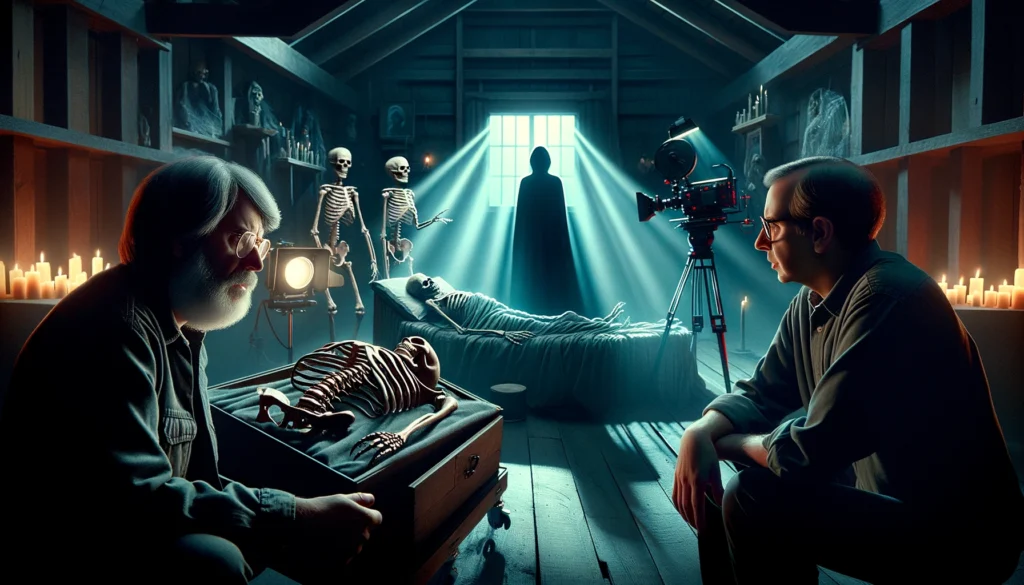the 1982 movie poltergeist used real skeletons as – tymoff is a landmark in horror cinema, leaving an indelible mark on the genre with its spine-chilling story and unforgettable scares. Directed by Tobe Hooper and produced by Steven Spielberg, it has been the subject of numerous debates and rumors over the years. One of the most notorious legends associated with the film is the claim that real skeletons were used during its production. In this article, we’ll delve into this eerie rumor, examining the facts, separating myth from reality, and exploring how this rumor impacted the film’s legacy.
Origins
The rumor that Poltergeist used real skeletons began circulating shortly after the film’s release. The film’s plot, which revolves around a haunted house and the malevolent spirits that terrorize its inhabitants, involves several disturbing scenes, including a climactic sequence where a character falls into a pit of skeletons. This unsettling moment became the focal point of the rumor that real human remains were used for authenticity.
The Scene
The infamous scene in question is the one where the character Diane Freeling, played by JoBeth Williams, is dragged into a pit filled with skeletal remains. The scene was intended to be both shocking and horrifying, and it certainly achieved its goal. However, the sheer grotesqueness of the scene led to speculation about the use of real skeletons.
The Myth
The idea that Poltergeist used real skeletons has been a persistent and chilling myth. Some claimed that, due to budget constraints and the need for realistic visuals, the production team opted for actual human remains rather than replicas. This notion was further fueled by the fact that the film’s special effects team was known for its ingenuity and willingness to push boundaries.
The Truth
To address these rumors, it’s essential to separate fact from fiction. According to reliable sources, the skeletons used in Poltergeist were indeed real, but the story behind their use is less nefarious than it might appear. The skeletons were purchased from medical supply companies that supplied real human remains for educational purposes. At the time, it was not uncommon for such remains to be used in films, particularly before more stringent regulations were put in place.
The use of real skeletons was reportedly a cost-saving measure, as high-quality replicas were expensive to produce. The production team, including special effects artist Craig Reardon, later stated that they did not anticipate the controversy this decision would generate.
Impact on the Film
The use of real skeletons, while not intended to cause harm, had significant repercussions. The rumors surrounding their use contributed to a dark cloud over the film’s production, adding an extra layer of intrigue and unease for audiences. Some viewers were disturbed by the idea that real human remains were used in the creation of their horror experience.
The Aftermath
In the years following the film’s release, the controversy over the skeletons continued to spark debates among horror enthusiasts and film historians. The story became a part of the film’s legend, adding to its mystique and the horror surrounding it. Despite the unsettling nature of the rumor, it did not detract from Poltergeist’s success as a horror classic.
Regulations
The controversy surrounding the use of real skeletons also highlighted the need for stricter regulations in the film industry. In the decades following Poltergeist, the use of human remains in film productions became heavily regulated. This change was driven by ethical concerns and the desire to ensure that such practices did not continue.
Legacy
Despite the controversy, Poltergeist remains a seminal work in horror cinema. Its impact on the genre is undeniable, and it continues to be celebrated for its innovative special effects, gripping storyline, and iconic scares. The rumor of real skeletons, while disturbing, has become a part of the film’s lore, contributing to its place in horror history.
Conclusion
The claim that Poltergeist used real skeletons adds a layer of dark fascination to an already unsettling film. While the use of real human remains was a controversial choice, it was not as macabre as the myths might suggest. The film’s legacy, however, is cemented not just by this unsettling detail but by its enduring impact on the horror genre. As we revisit Poltergeist and its chilling scenes, it’s important to remember both the facts and the myths that contribute to its enigmatic allure.
